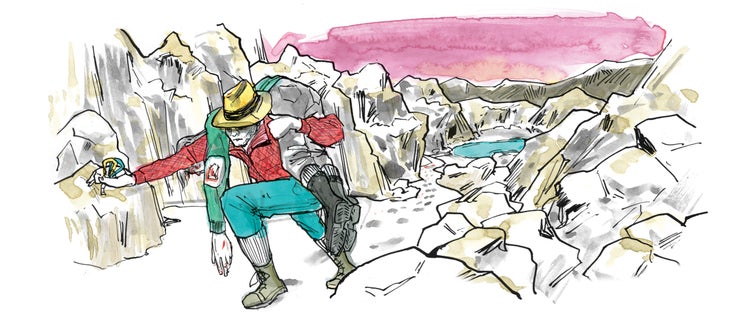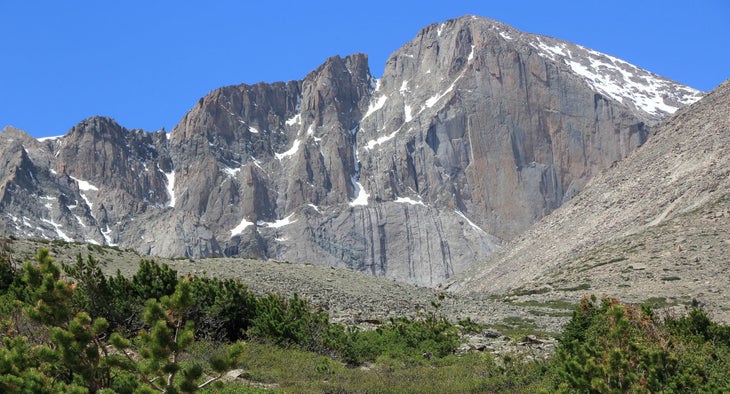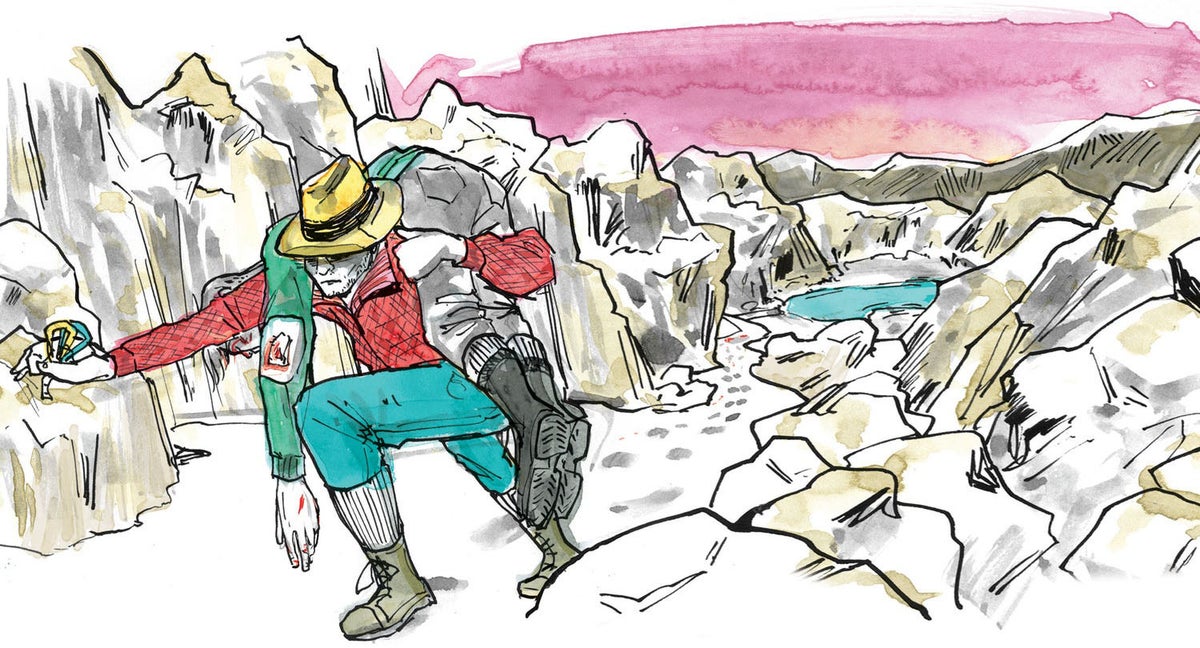No products in the cart.
Outdoor Adventure
Injured Rock Climber Is Rescued with a Piggyback
During the early 1930s, Hull Cook was one of several guides who worked summers at the old Boulder Field Shelter Cabin on Longs Peak, the high point of Rocky Mountain National Park. He participated in this highly unorthodox rescue in the summer of 1931.
“One evening, after dinner, I thought that I heard a most unwelcome sound: the yodeling signal, which we used as a call for help,” Cook wrote in an unpublished memoir of this era. “I rushed outside, hoping that I was mistaken, but there it was again.”
In those days, Longs Peak resembled a peak in the Alps, with a staffed hut at 12,750 feet where overnight guests could get hot meals and then climb the mountain with a guide. (The hut closed in 1937.) Cook and the other guides were expert climbers, at least by the standards of the day. As the only locals with technical climbing expertise, they were also the de facto rescue team.

Cook grabbed a rope, first aid kit, and a flashlight and rapidly hiked up to Chasm View, the ledge at the foot of the north face, overlooking the famed Diamond wall. Wayne “Gilly” Gilbert, the guide who had yodeled to get Cook’s attention, pointed to a climber who had fallen and was lying on Broadway, a big ledge system that cuts across the northeast face, about 800 feet above the Mills Glacier.
“The approaching darkness made it difficult to even see the victim,” Cook wrote. “Gilly and I decided at once that he could be reached [most] quickly from above. Accordingly, we climbed to the top of the peak, crossed southward above the Diamond, and descended to Broadway.”
When Cook reached the man, Leonard Thomas, he was “babbling incoherently about falling.” He had slipped after changing from hobnailed boots into hemp-soled climbing shoes on the upper face. His pack had plunged to the Mills Glacier, and Thomas had been lucky not to follow it. Now the question was: how were they going to get him off the face?
The Response

With a single braided manila rope that was probably only 120 feet long, no climbing harnesses, no rappel devices, and no more than a handful of pitons and carabiners, Cook had few options for evacuating an immobile victim from a ledge at 13,200 feet, now in pitch darkness. The only way out was back up the route he and Gilly had just descended. Kiener’s Route is the easiest way to climb the upper east face of Longs, but it has two pitches of low fifth-class climbing and hundreds of feet of steep scrambling. Thomas had a concussion, a broken collarbone, and assorted lacerations and contusions. He was in no shape to climb, and they couldn’t haul him, so the only way up was to carry him.
This was standard practice, according to Cook, who frequently would carry stricken hikers or climbers. “The dead ones you had to carry lopped over both shoulders, but we’d get [the live ones] set on our shoulders so that we had plenty of breathing room. Tell them to put their hands around our forehead and say, ‘Just keep your fingers out of my eyes,’ and away you’d go,” Cook wrote.
Gilly had remained one pitch up Kiener’s Route, ready to belay Cook and his cargo. “After securing the rope around his middle, I called up to Gilly to take up the slack. Then, after explaining the shoulder carry to [the victim], I hoisted him into position.” Together, they started traversing the narrow Broadway ledge. With a flashlight gripped in his teeth, Cook edged along the sloping ledges, groping for handholds. The tight rope from above did nothing to protect Cook, but it “provided the reassurance that if I slipped the man would be saved by the rope. He would no longer be my responsibility; he would become Gilly’s problem.”
Now Cook began climbing Kiener’s steep corners—carrying an unstable 150-pound-plus load draped over his shoulders. Despite this burden, with good holds and his fellow guide belaying, Cook felt “we were home free” on these two steep pitches. He continued carrying the man up about 750 feet of third- to fourth-class terrain, with Gilly moving higher to establish a new belay each rope length. Then they climbed across the top of the Diamond, at 14,000 feet, and down the north face.
There, a steel cable bolted to the rock allowed Cook to climb hand over hand down fifth-class rock.
The victim “was still riding on my shoulders,” Cook recalled. “Each time his toes suddenly slipped off the rock, he apparently relived the terror associated with his fall, for each time he let out a shriek that would frighten a banshee.” Finally they reached the safety of the hut, where Thomas spent an uncomfortable night. He rode out on horseback the next day.
Although Cook’s strength and stamina are self-evident from this story, he also benefited from exhaustive knowledge of Longs Peak, gleaned from several summers of working as a guide and exploring every face of the mountain. When it came time to carry an injured man up a technical route in the dark, he had the confidence of knowing the route intimately.
Cook’s efforts prompted the victim’s father to nominate him for a Carnegie Medal for heroism, but this proposal was quashed because Cook was a professional guide (though he wasn’t working for the victim). The climber’s father, however, gave Cook a reward of $50, equivalent to at least $500 today. Cook’s father, meanwhile, told him, “You should have taken that Carnegie fellow up there [on Longs]. He might have changed his mind.”
Source link

